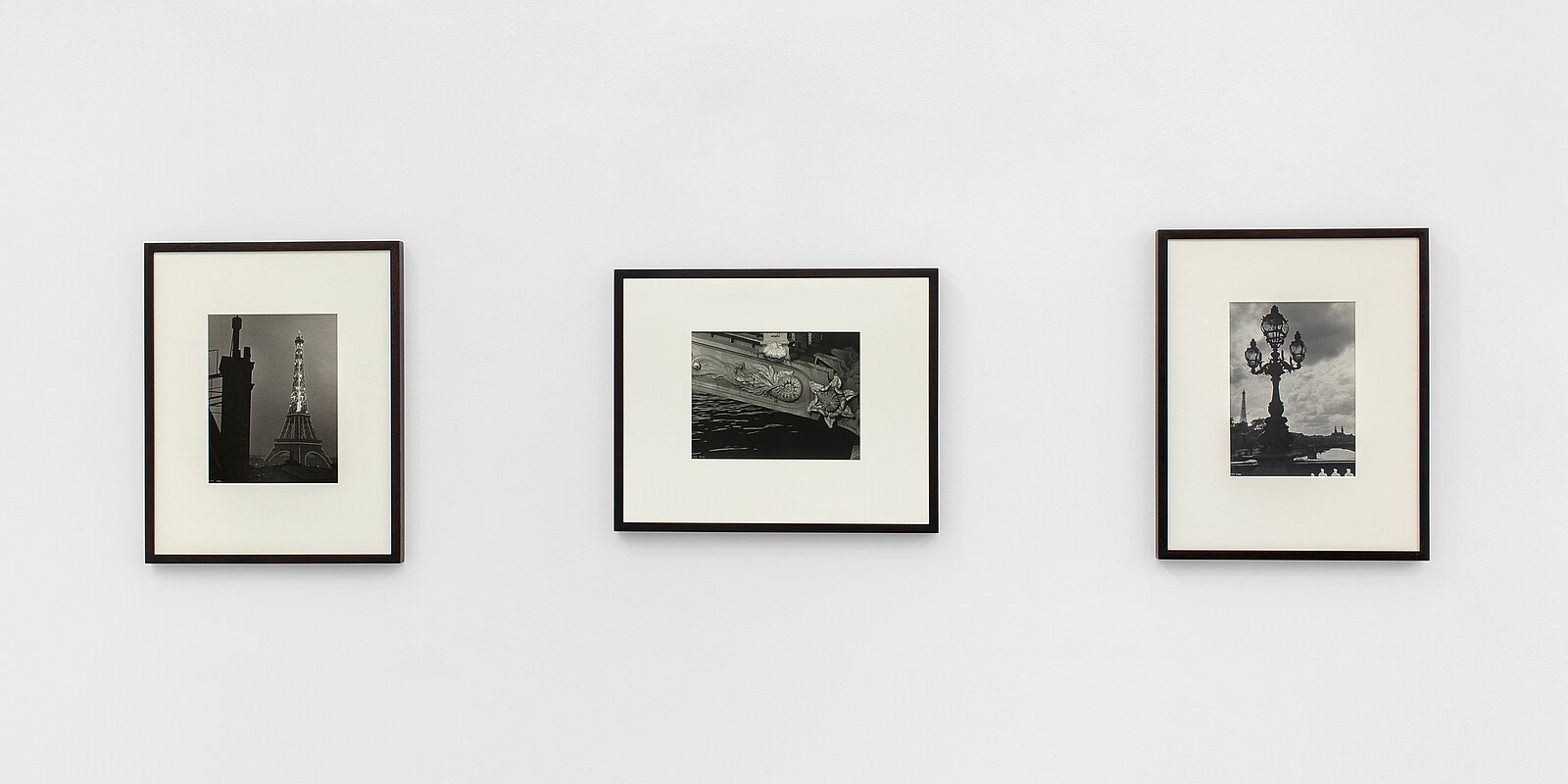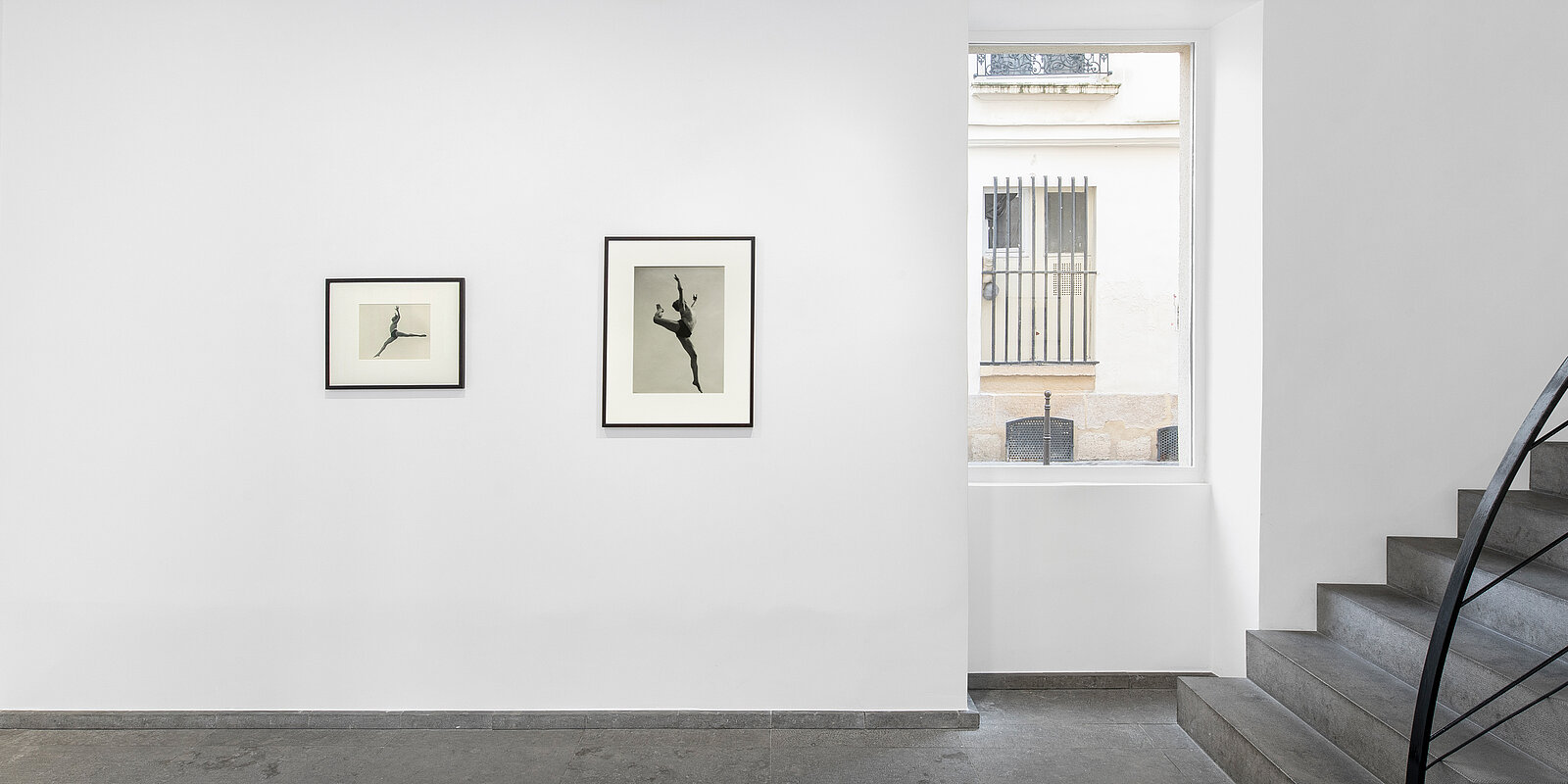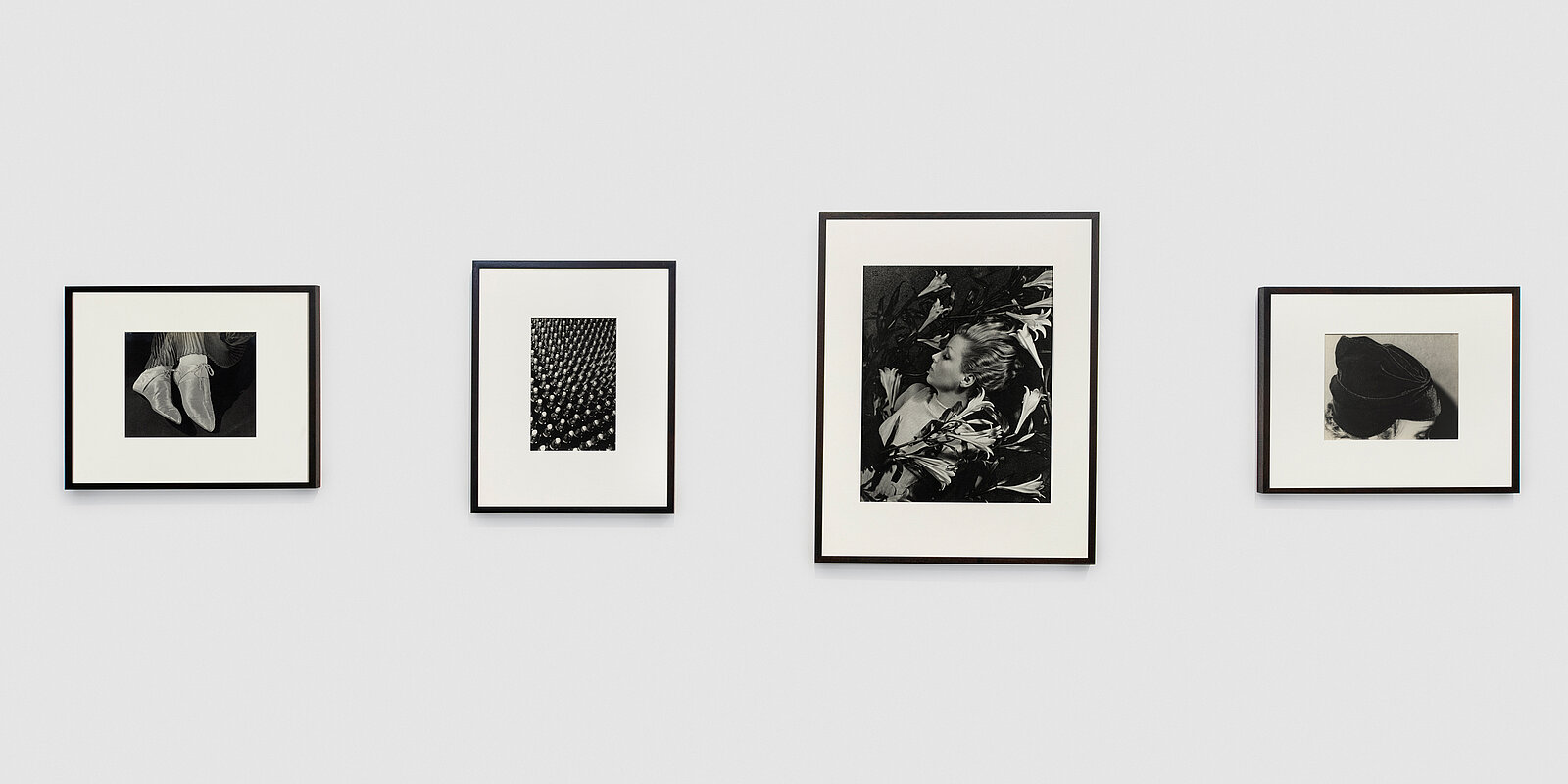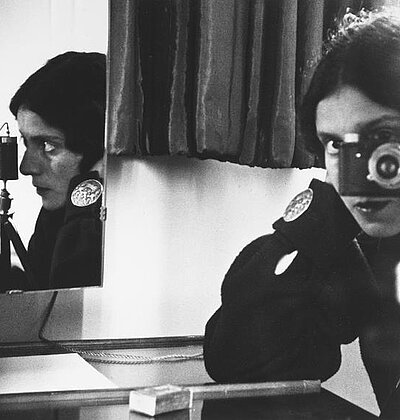Ilse Bing: Ilse Bing. Photographs 1928 - 1935
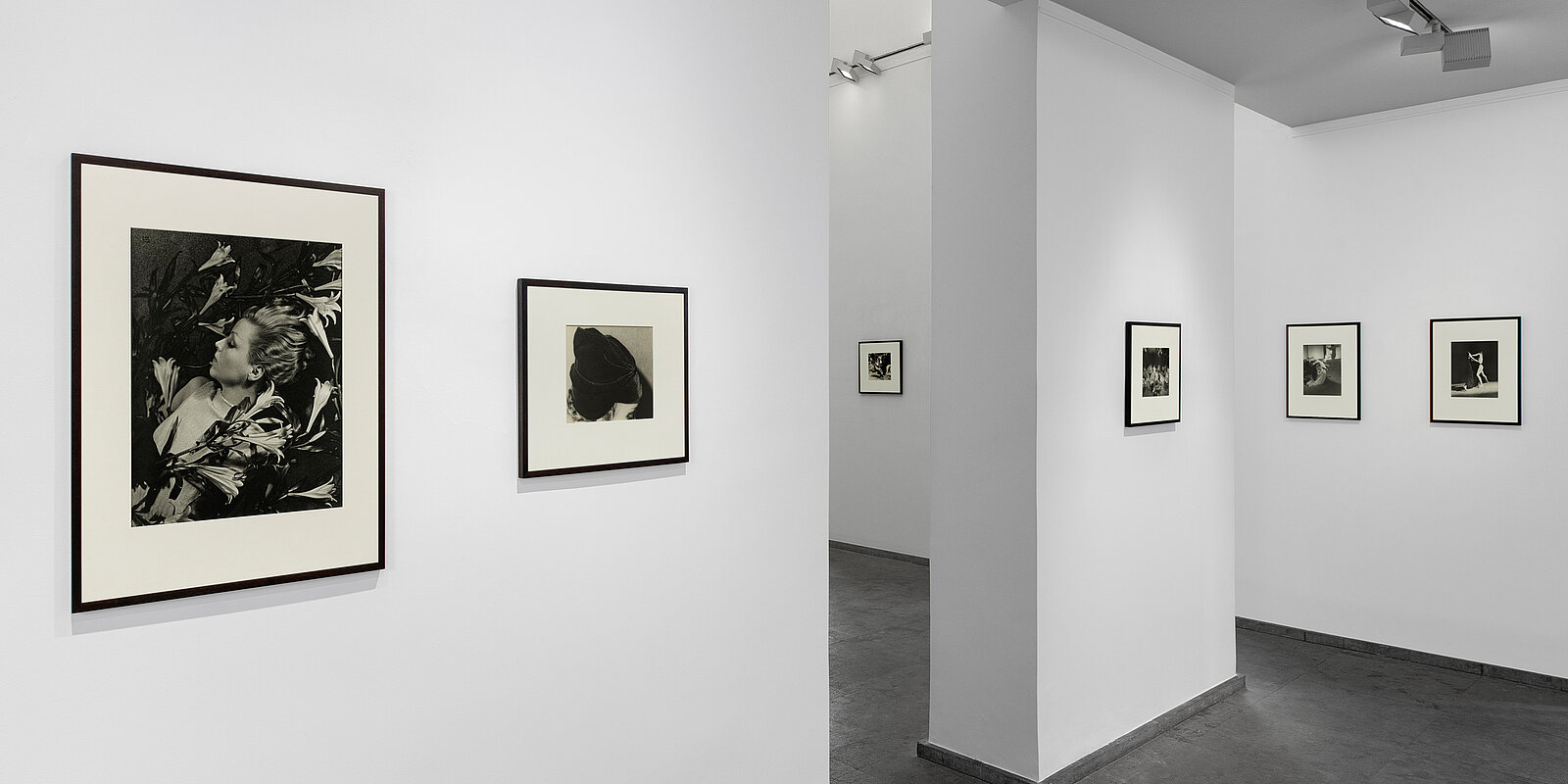
Galerie Karsten Greve Paris
Tuesday - Saturday, 10 am - 7 pm
ILSE BING: Photographs 1928 - 1935, Galerie Karsten Greve Paris 2021. Photos: Nicolas Brasseur
Galerie Karsten Greve is delighted to present its new exhibition dedicated to the German photographer Ilse Bing. Photographs 1928 – 1935 showcases a wide selection of photographs taken in Frankfurt and Paris between 1928 and 1935, which illustrate the avant-garde experiments conducted by the woman nicknamed “the Queen of the Leica”.
As a self‑taught photographer, Ilse Bing did not restrict herself to a particular genre, demonstrating considerable freedom in the choice of her subjects and taking interest in portraits, fashion, dance and still lives alike. She also drew inspiration from cities, whether in architecture or in scenes of daily life, including details that could be thought insignificant (Dead Leaf and Tramway Ticket On Sidewalk, Frankfurt, 1929). Her snapshots, characterised by close‑ups, perspectives and bold framing choices, as well as the attention given to the details of city life, are emblematic of the “New Vision” style. This modernist photographic movement that emerged in the 1920s was led by Berenice Abbott, André Kertész, Eli Lotar, Sasha Stone and Florence Henri, an iconic figure of that modernity, whose geometry lessons resonated perfectly with Ilse Bing. However, Ilse Bing struck her own path by imbuing her photographs with delicacy and poetry, using plays of contrast and light and the spontaneity of her pictures.
This mastery of light and lighting is another key part of Ilse Bing’s style, which gives her photographs their poetic aura. They seem straight from a dream, even when they represent the most ordinary of environments.
One of the most iconic examples is Salut de Schiaparelli, 1934, an advert created for an evening fragrance launched by the dressmaker Elsa Schiaparelli. In this photograph, a model asleep on a bed of lilies is bathed in silvery moonlight. Ilse Bing called upon all her mastery of plays of shadow and light in this photograph, in striking contrasts. The connection between the photographer’s taste for fantastical beauty and the enchantment of Schiaparelli’s surrealist creations is evident.
Ilse Bing experimented with plays of contrast and light and found in night photography the way to express her dreamlike vision of reality. A true experimenter, she challenged that representation through the technique of solarisation, which she tried for the first time in 1934. Discovered in the 19th century and reinvented by Man Ray, this technique, which was embraced by the surrealists, made it possible to partially reverse positive and negative values in the final print. In this type of picture, objects seem to shine with a supernatural aura and the limit between dream and reality dissolves.
Place de la Concorde, 1934, is certainly one of the most radical expressions of the imaginary world created by Ilse Bing. Taken against the light, the fountain becomes a dark shape haloed by water that forms a curtain of light.
That spontaneity was made possible by her mastery of the Leica, which she started to use in 1929. At a time in which 9 x 16 cm formats were dominating photographic production, Ilse Bing was one of the first to use it and almost the only photographer to work exclusively with that camera, a 35 mm. Very simple and convenient to use because of its small size and light weight, the Leica used a new framing method that involved a direct connection between the photographer’s vision and their subject. With this camera, photography naturally became an extension of the photographer’s gaze. This spontaneity led to it becoming the privileged tool for photojournalism and modern illustrated press.
After making her first foray into photography in Germany, Ilse Bing left Frankfurt in 1930 to head to Paris, which was, at that time, the centre for avant‑garde photography. She spent the ten most productive years of her career there.
While the Leica was favoured by photojournalists in Germany and hailed as the ideal reporting tool, it was redefined in Paris as a poetic instrument. It became the perfect camera to capture what Henri Cartier‑Bresson called “decisive moments”. In Paris, Ilse Bing forged her style, combining poetry and realism, dreamlike enchantment and the clarity of modernity. She sought contrasts and original juxtapositions that transformed the banal reality of daily life into a new idea. Her preoccupation with geometry was still ever‑present and blended with the portrayal of time and movement that her mastery of the Leica enabled her to reflect to perfection, particularly in her representation of dance. In her first representation of cancan dancers, Ilse Bing transcended the anecdotal aspect of her subject to achieve a pure representation of movement, a true stylistic break. Her work would be selected by the Galerie de la Pléiade to feature in its annual photography exhibition. She was noticed by the critic Emmanuel Sougez, who drew attention to the dynamism of her dancers and, from then on, published her work in the L’Illustration and Arts et Métiers Graphiques journals at every opportunity.
With Willem Gerard van Loon, her patron’s son, she perfected her representation of movement. In Willem Gerard Van Loon, 1932, she captured his aerial figure standing out against the sky, in a leap that seems frozen in time and suspended in mid‑air. Her talent caught the attention of George Balanchine, who asked her to photograph the rehearsal of his ballet Errante (The Wanderer), performed for the first time in June 1933. In this series, Bing’s photographs convoke both the expressive quality of the lights and the evanescence of the beautiful choreography. Her desire to document the performance of a ballet as a continuous whole, without any additional lighting, resulted in a feat of delicacy and vivacity.
